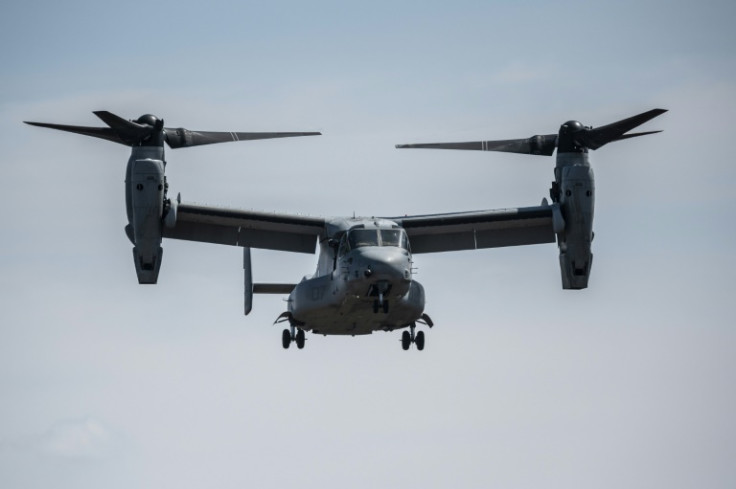Pentagon To Lift Ban On Osprey Helicopter Flights

The Pentagon will lift its ban on V-22 Osprey flights, after the helicopters had a fatal crash killing eight US Air Force crew members on board.
The Naval Air Systems Command (NAVAIR), which grounded the Osprey, will lift the ban and allow services to begin again.
Following a high-level meeting Defense Secretary Lloyd Austin endorsed the military services' plans for a safe and measured return to operations, reported The Associated Press.
According to The Mirror, Floyd had met with top leaders for the Navy and Air Force to discuss getting the Osprey in the air again.
The head of Naval Air Systems Command is expected to fly to Japan next week to brief the Ministry of Defense and Japanese government, and no Ospreys will fly until that briefing is made.
It remains unclear when Ospreys will fly again.
Last year, in November, the Air Force grounded its entire Osprey fleet as the operational grounding of about 400 aircraft was intended to mitigate risk amid investigations.
The US-made Osprey is a hybrid aircraft that takes off and lands like a helicopter but can rotate its propellers forward and cruise much faster, like an airplane, during flight. It has suffered a series of accidents in many parts of the world and due to its poor safety record the aircraft is reported to be abhorred especially in Okinawa. Air Force special operations units use the CV-22 to slip in and out of areas without established runways, where fixed-wing planes may not be able to land with troops and supplies.
In December 2016, Japan had called on the US to ground the aircraft following the crash landing of the Osprey off the coast of Okinawa earlier in the month. It was reported to be the first accident involving an Osprey aircraft in Japan since its deployment in the country in 2012, but it marked the second crash of a Marine aircraft in the region in less than one week.
© Copyright IBTimes 2025. All rights reserved.





















